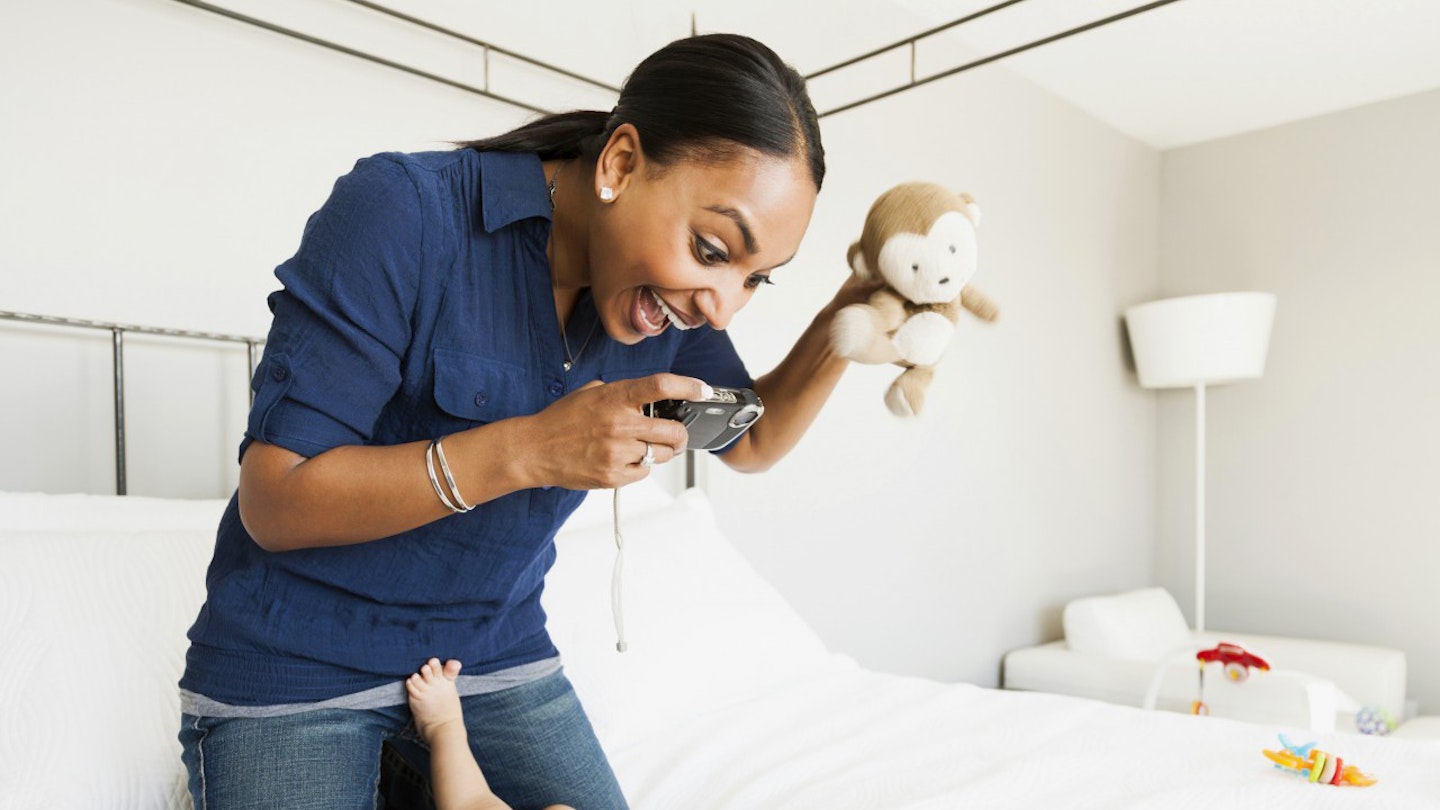Get the newborn pictures that will rival the official photos of Prince George with these expert tips
Kit yourself out
These are the photos that your family will want a copy of, you’ll be sharing all over Facebook and, yep, you’ll be digging out when it’s your teeny baby’s 18th…
Get the kit
According to legendary photographer Annie Leibovitz, who’s photographed celebrities and supermodels, such as Kate Moss, the iPhone is ‘the snapshot camera of today’.
Smartphones and Instagram mean you can capture the moment and give it a vintage tint wherever you are. But it’s still worth buying a decent camera.
‘You can get plenty of good features for under £100, such as high-definition video, a zoom lens and an image stabiliser, which keeps pictures steady even when your hands aren’t,’ says photographer Ian Hooton.
The best time
You’ll want to photograph your baby in her first few hours, so take your camera in your hospital bag.
Turn off the flash and use a window in the ward to light the shot if you can
‘Hospital lighting can be very harsh, so turn off the flash and use a window in the ward to light the shot if you can,’ says Ian. ‘Ask the person taking the photo to focus completely on you and your newborn, and immortalise that magical first cuddle or feed.’
Oh, and just make sure you give picture approval before your partner puts your photo post-birth on Facebook.
Pick your moment
You’ll take a better shot when your baby is fed, changed and rested. ‘But you’ll need to have a little patience, too,’ says Ian.
‘Unlike adults, newborns don’t know how to pose for the camera on demand.’
Set the scene
The strongest photos are often the simplest ones. ‘Busy patterns take the eye away from your newborn, so go for something plain,’ says Ian. ‘Laying your baby down on a cotton sheet or throw, then taking the picture from above is ideal.’
This is especially good for passport photos, which your baby will need from birth.
Best lighting
If you don’t want your picture ending up in the trash can, sort out your lighting. ‘Light streaming through a window onto your newborn, or coming from behind her, creates a beautiful, romantic effect,’ says Ian.
‘Switch the automatic flash setting to manual, then you’ll have more control over the way your picture is lit.’
The pictures you need to take
There are some classic baby shots that just can’t be beaten. ‘Everyone needs an angelic photograph of their newborn sleeping. It’s also great to get those more intimate moments, such as her first bathtime,’ says Ian.
And don’t forget the zoom function, either. It’s great for capturing details, such as tiny fingernails or delicate eyelashes.
Get your baby to focus
It takes a month or two for your baby to focus properly, so the best way to get her attention is by using sound. ‘If cooing doesn’t catch her eye, try shaking a noisy toy next to the camera,’ says Ian.
How to store
There’s no point taking lots of photographs if you don’t back them up regularly. ‘Use a hard drive, disc or memory stick and get into the habit of doing it at least once a month,’ says Ian.
‘You can always delete a shot later if you decide you don’t like it, but you can’t replace a lost picture if your computer crashes.’
